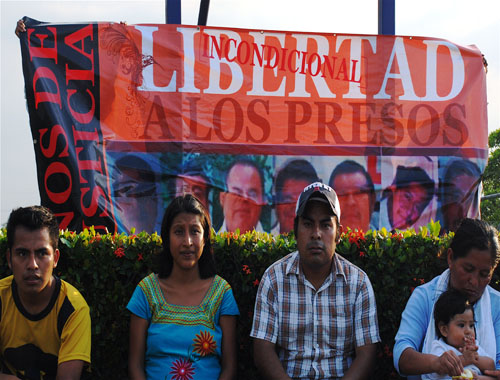Indigenous Oaxacan Political Prisoners in Private Facilities

by Kristin Bricker and Santiago Navarro, Upside Down World
After spending nearly 17 years in the same prison cell just outside of Oaxaca City, seven indigenous Loxicha political prisoners were transferred in June—twice. The transfers, which enraged and frightened their families and supporters, were part of a nationwide shuffle of existing prisoners to fill beds at newly opened facilities that were financed by Mexican and United States drug war money.
The prisoners, Agustín Luna Valencia, Eleuterio Hernández Garcia, Fortino Enriquez Hernández, Justino Hernández José, Abraham Garcia Ramirez, Zacarias Pascual Garcia López, and Alvaro Sebastián Ramirez, are Zapotec indigenous men from Oaxaca's Loxicha region, one of the state's poorest and most marginalized. The seven Loxichas are accused of participating in the Aug. 29, 1996, Popular Revolutionary Army (EPR) uprising in la Crucecita, Oaxaca, in which 11 government agents were killed. The indigenous men say they were tortured into signing hundreds of pages of blank paper that were later filled in with confessions. The Loxichas were convicted of murder (of the federal agents), terrorism, and conspiracy, and they were sentenced to up to 31 years in prison.
Recent Updates
22 hours 25 min ago
3 days 21 hours ago
5 days 1 hour ago
5 days 1 hour ago
5 days 14 hours ago
5 days 14 hours ago
5 days 17 hours ago
5 days 18 hours ago
5 days 18 hours ago
1 week 1 day ago